
Posted 2015-10-08
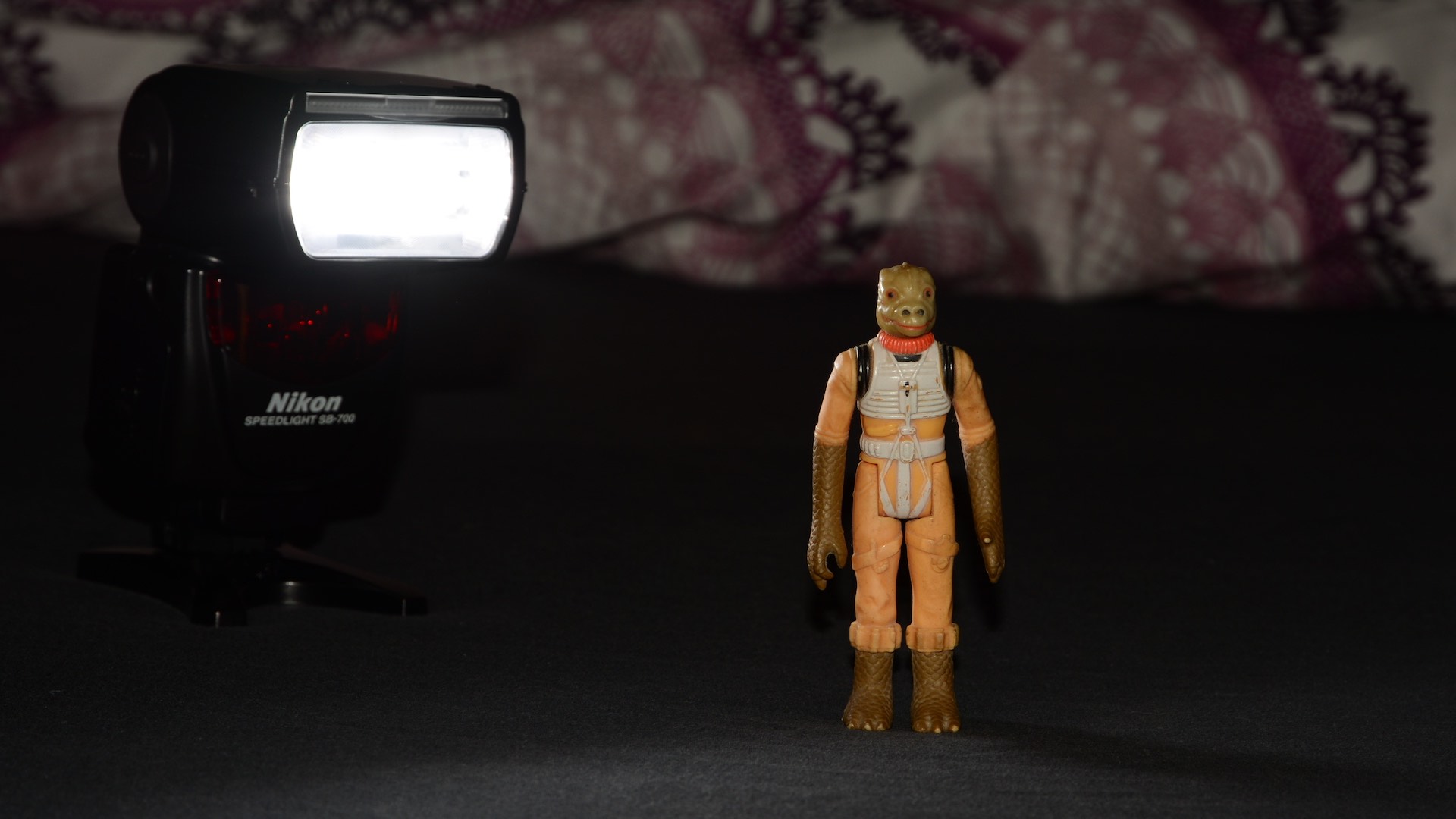
It's been a while since I wrote about photography. But I got another toy the other day, and I have a lot to say about it! So be warned, this could get a bit long. The new toy in question is a Nikon SB-700 "speedlight". What we regular people would call an external flash unit, or simply "a flash".
Since time immemorial, most cameras have come with a little shoe on the top where you can dock a flash. My Nikon D7100 is no exception. The earliest form of flash was simply burning a bunch of magnesium while taking a photo. In the middle of the 20th century, this was done with magnesium wire in a single use flash bulb and nowadays we use electronic Xenon flashes. When I first got started with photography, you often still had to choose between M (bulbs) and X (electronic) flash, as the former needed to be triggered earlier so they'd be fully ignited when the shutter opened. Xenon flashes on the other hand are extremely fast and must not be triggered until the shutter is fully open. SLR shutters have a curtain design, where one curtain opens and another closes. For shorter shutter speeds, the second curtain starts to close before the first curtain is completely open, but (normally) flash only works when both curtains are open at the same time. This is why flash sync speeds are limited well below the camera's normal fastest shutter time. On the D7100, it's 1/250.
(Interestingly, compact cameras use a different shutter design and can often use flash at 1/1000 or faster.)
The most common way to use a flash is as a fill-in light. For instance, this is a photo of the Bossk action figure in (rather poor) daylight:
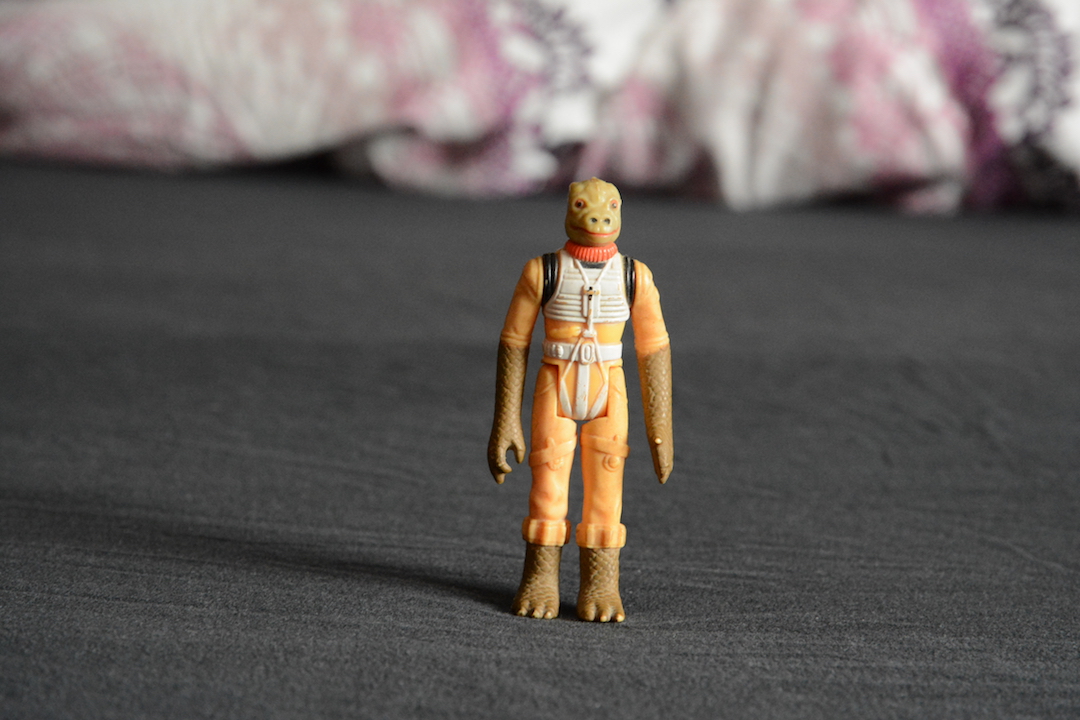
In this particular case, there was no need to fill in harsh shadows using the camera's built in flash, but I did it anyway:
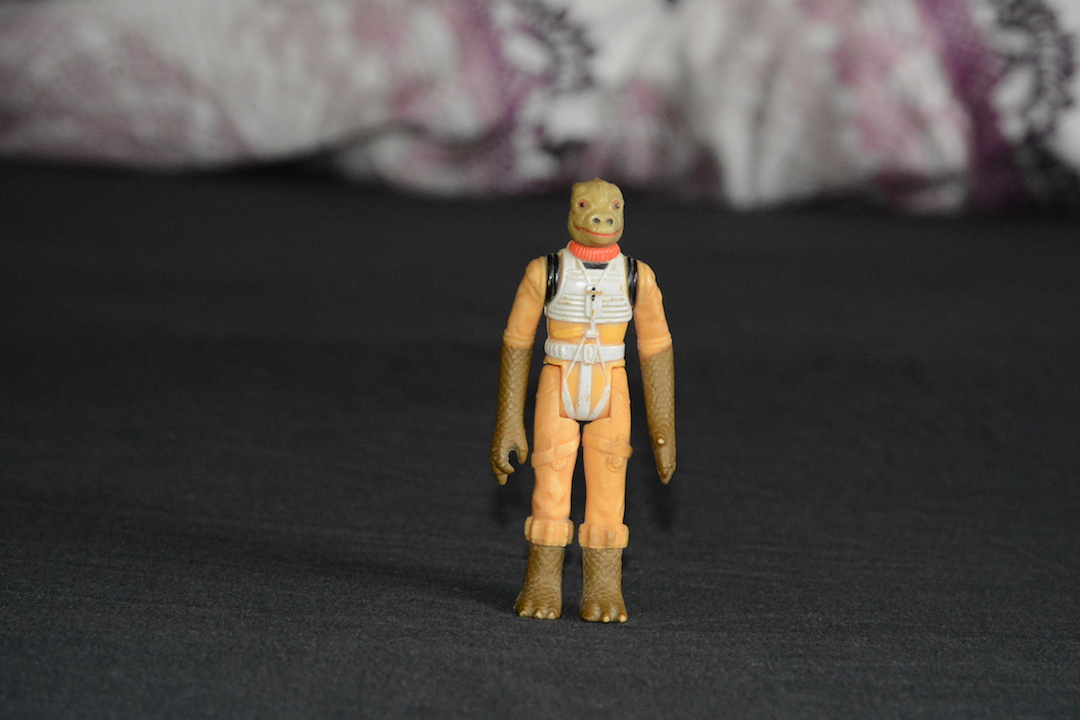
Note that the camera kept the exposure settings the same: a very high ISO 3200 and a pretty long shutter time—the flash is only meant to augment the natural light, not replace it. Interestingly, when attaching the SB-700, the camera switched to ISO 400. As a result, the background is much darker, but the flash illuminates the foreground:
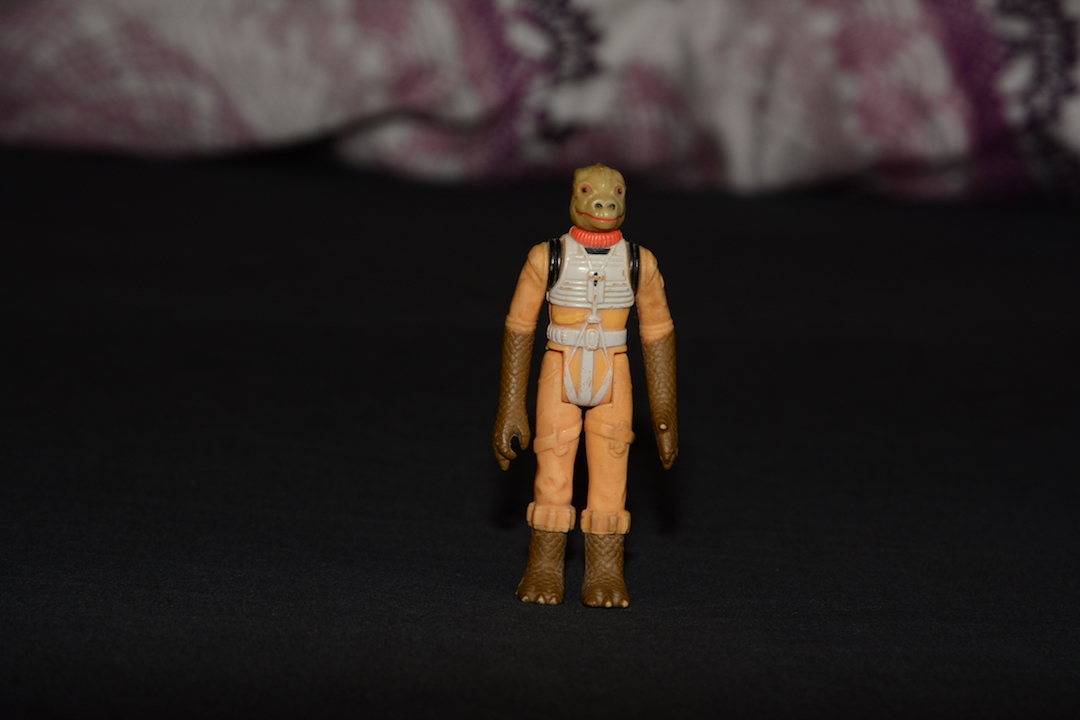
The nice thing about an external flash unit is that you can swivel the head up and rotate it left or right. This is with the head at 45 degrees, basically pointed at the ceiling behind the figure. The version on the right has the bounce card extended, a little while piece of plastic that bounces part of the light in the direction of the subject. This helps give the eyes some spark, although I don't think it worked on Bossk.
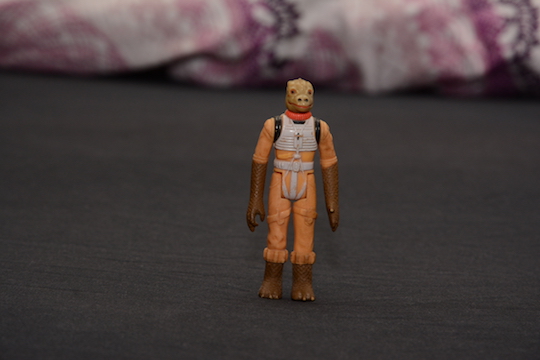
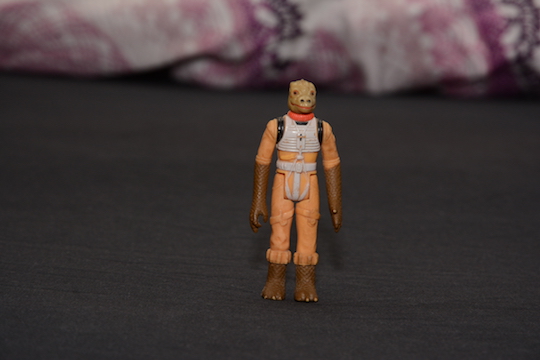
60 degrees:
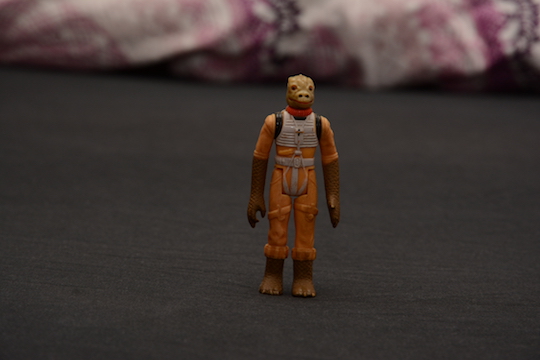
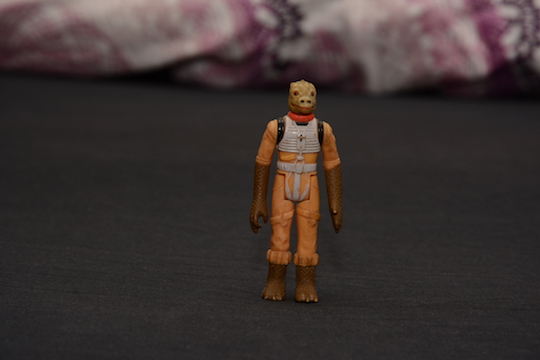
90 degrees, straight up:
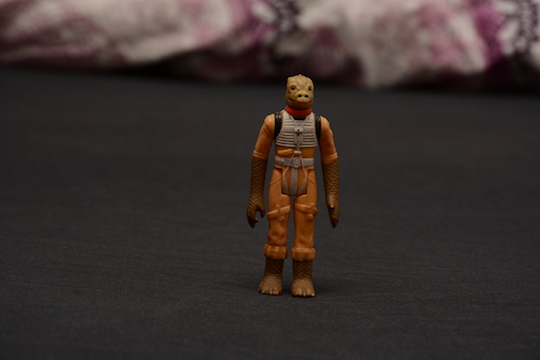
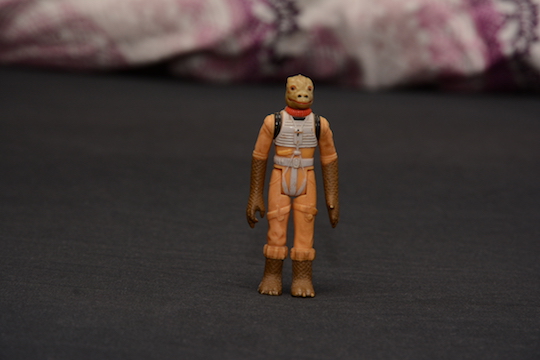
I'm not entirely sure what's going on with the exposure, at 90 degrees without the bounce card the photo is pretty underexposed, but you'd think that the flash is powerful enough to provide enough light despite the bounce. So always check your photos and add some exposure compensation as needed. You can use the normal exposure compensation setting or specifically dial the flash up or down, which is of course very useful if there's too much or not enough fill in flash.
This is a shot with the flash pointed directly forward but with the built-in "wide panel" deployed:
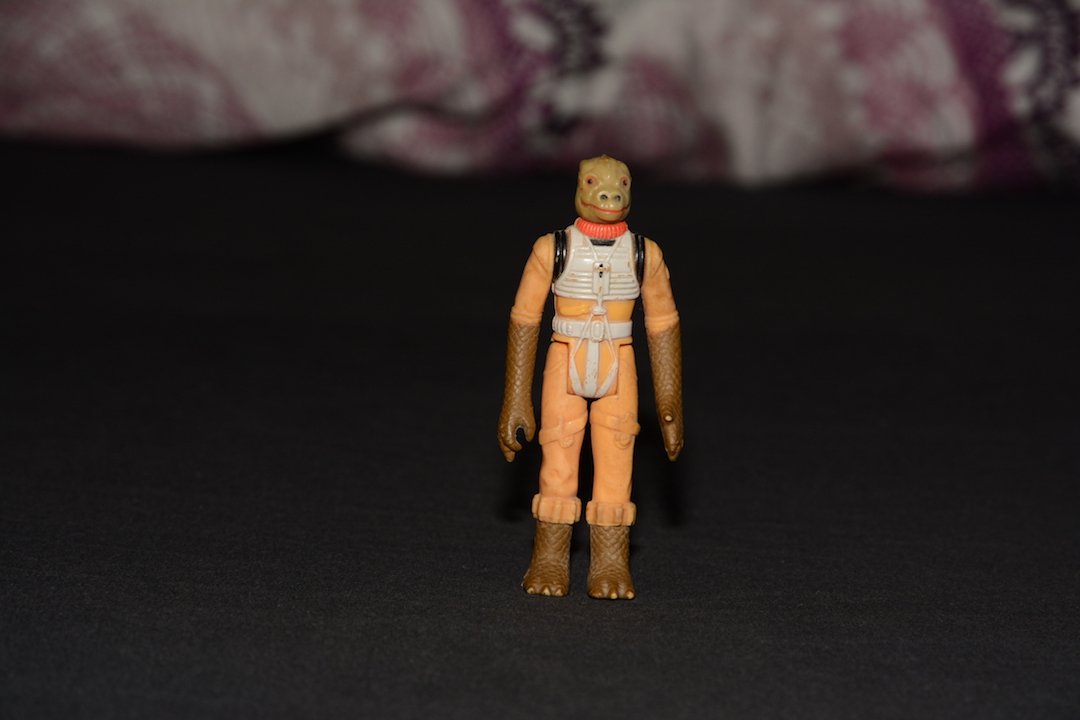
And this is with the separate plastic "diffusion dome" over the flash, which helps getting rid of most of the harsh reflections:
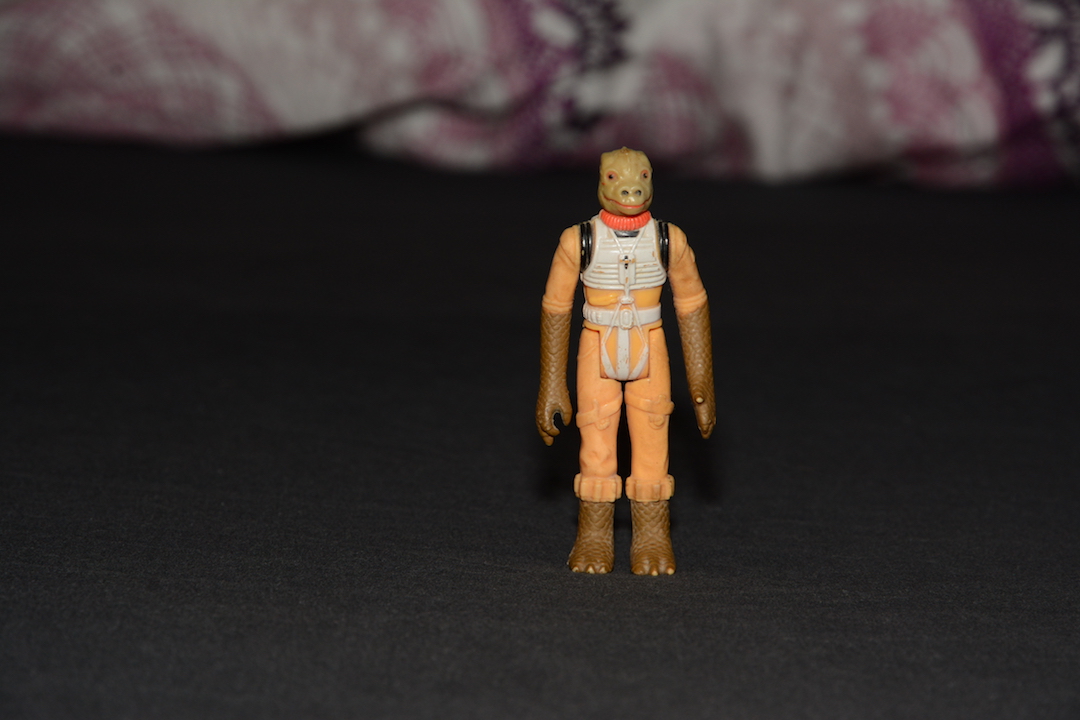
Time to turn the unit sideways. 45 degrees up and 30 degrees to the right:
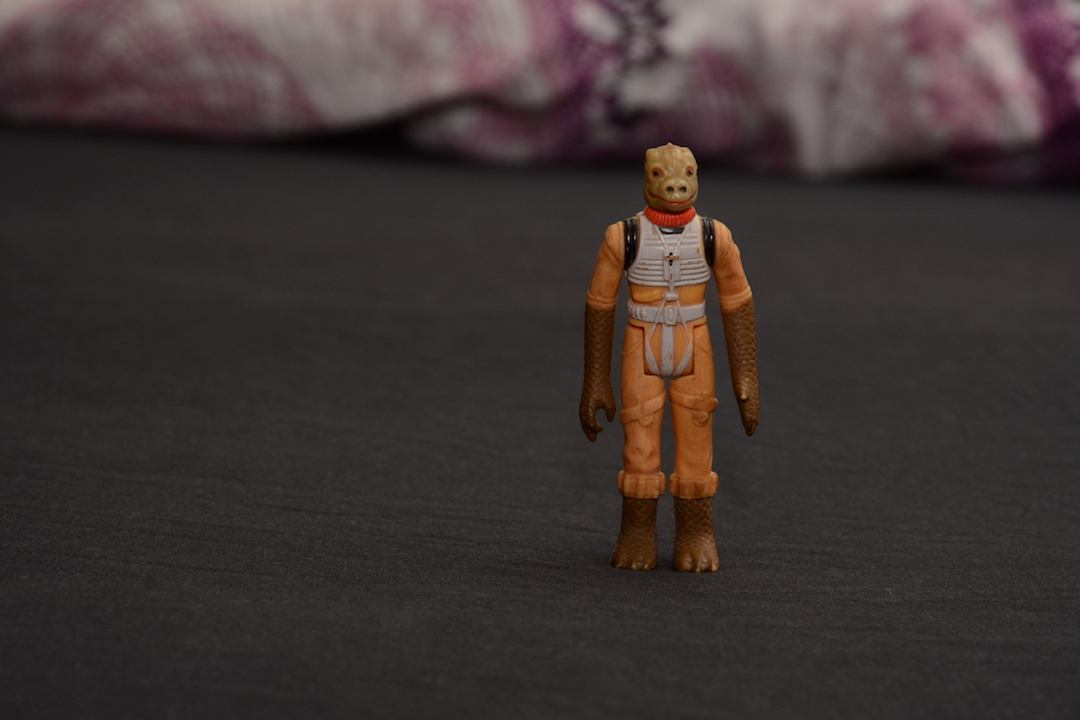
45 degrees up and 45 degrees to the right:
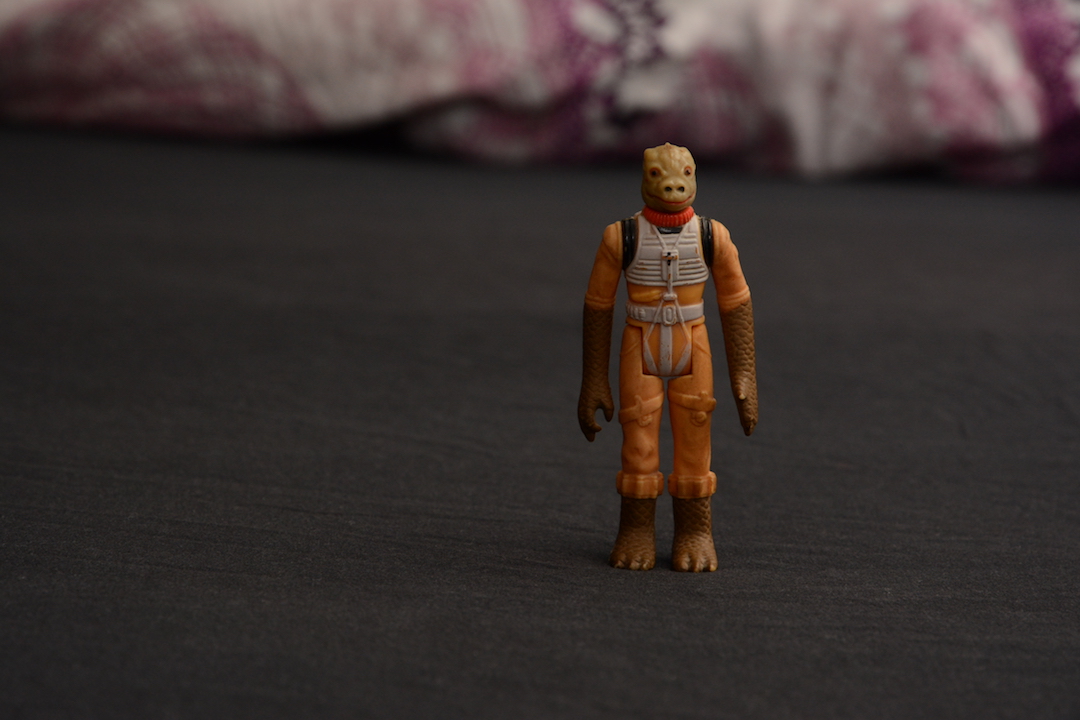
Although having a more powerful flash that flips and swivels is somewhat useful, it's not really worth the several hundred euros/dollars that Nikon charges for its flash units. But things get much more interesting once you remove the flash from the camera's hot shoe. That's right: the SB-700 (and the rest of the SB family from the SB-500 up) can be used remotely without the need for wires or additional equipment using Nikon's Creative Lighting System, which includes Advanced Wireless Lighting. I'm not sure if the cheaper models can also be a commander by themselves or if they need a flash unit on the camera to be the commander... All of this stuff is extremely poorly documented. But on the D7100, you can control the SB-700 wirelessly directly from the camera.
And the really cool thing is that this doesn't use radio or infrared: the camera uses flash pulses from the built-in flash to control additional flash units! The system supports four channels, so I immediately changed to a non-default channel to avoid collisions with other photographers. There can be three groups of flashes, and each group can have an unlimited number of flash units. You get to set exposure compensation or manual light output for each group separately.
The simple setup is where you have the built-in flash and the SB-700 (or another model with the same capabilities) as a remote flash. To make this work, you need to set the flash to "remote" mode and the camera to "commander" mode. This is setting E3 in the menu system. I also like to set the shutter speed to the maximum 1/250 as well as control the aperture myself, so the camera needs to be in M mode. Also, I set the ISO to 100 and turn off auto ISO for these types of short range shots; the flash is more than powerful enough to generate enough light to not have to resort to high ISO values. The nice thing about the D7100 is that you can then save these settings under U1 or U2 so you can bring them up quickly as needed.
These are shots with both the built-in flash and the SB-700 active in TTL mode (the default). Flash to the right, fairly close to the subject:
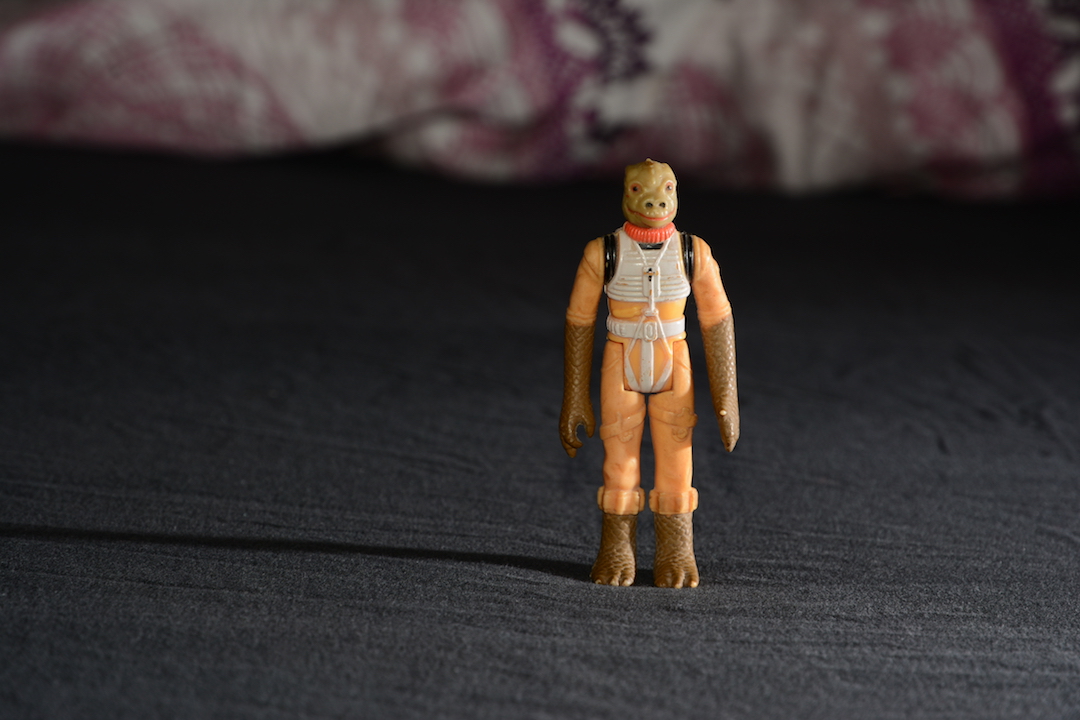
Here, the SB-700 is much further away, so the built in flash does most of the work and you get that flat "flash in your face" look:
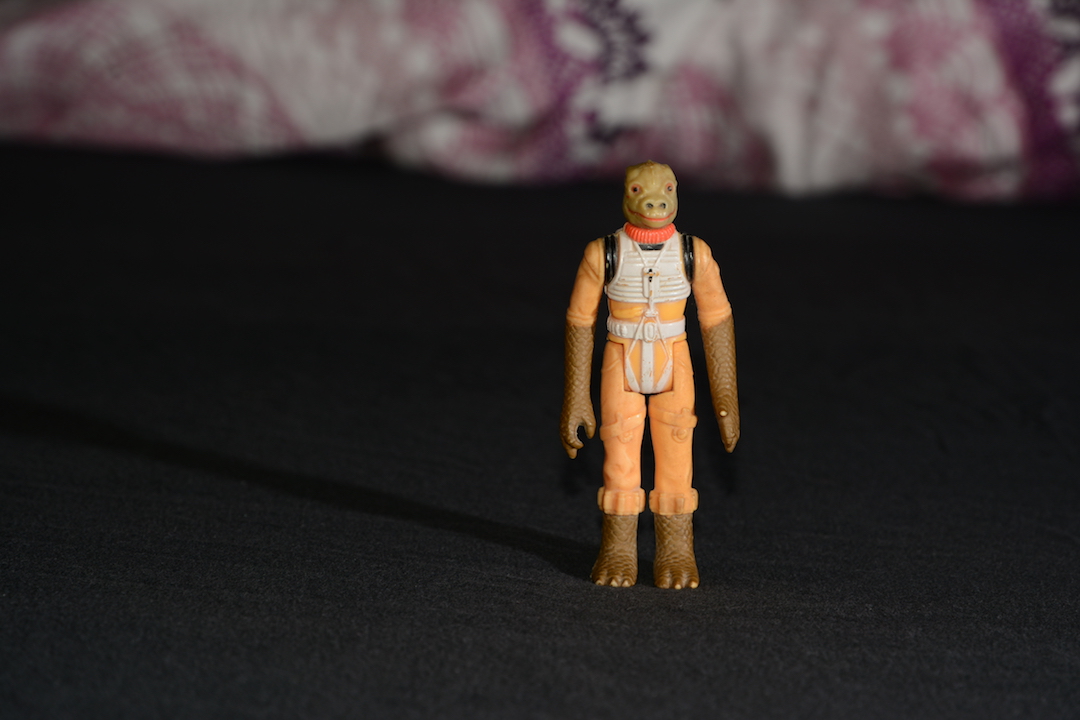
Here I hold the flash above the subject and slightly in front:
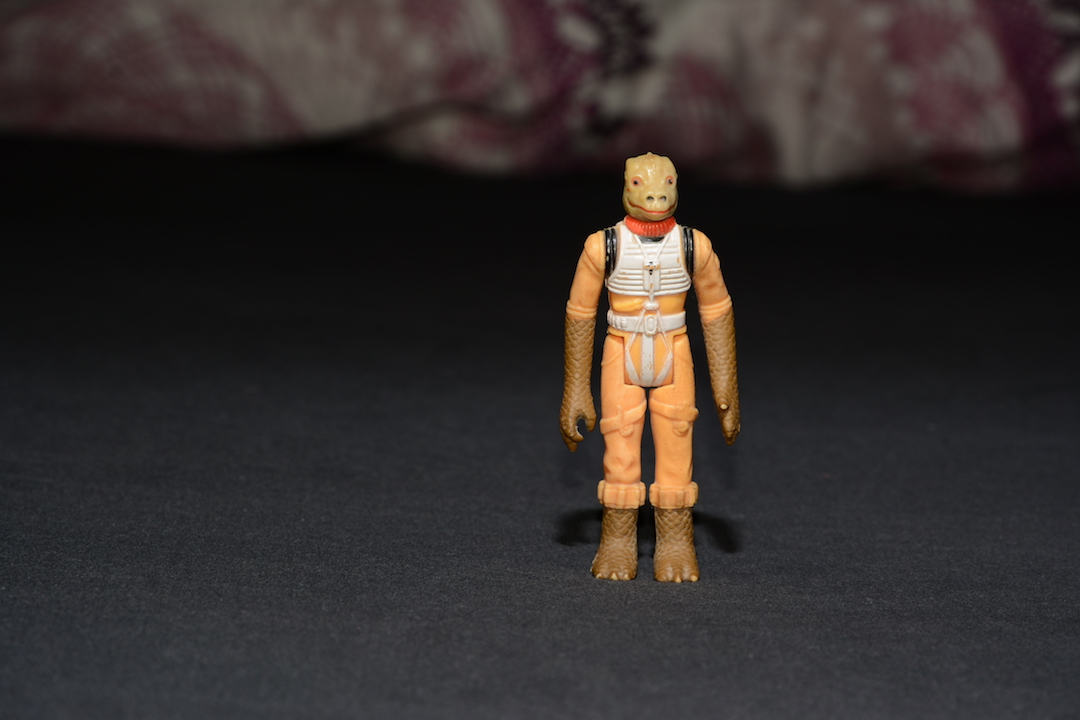
Straight overhead:
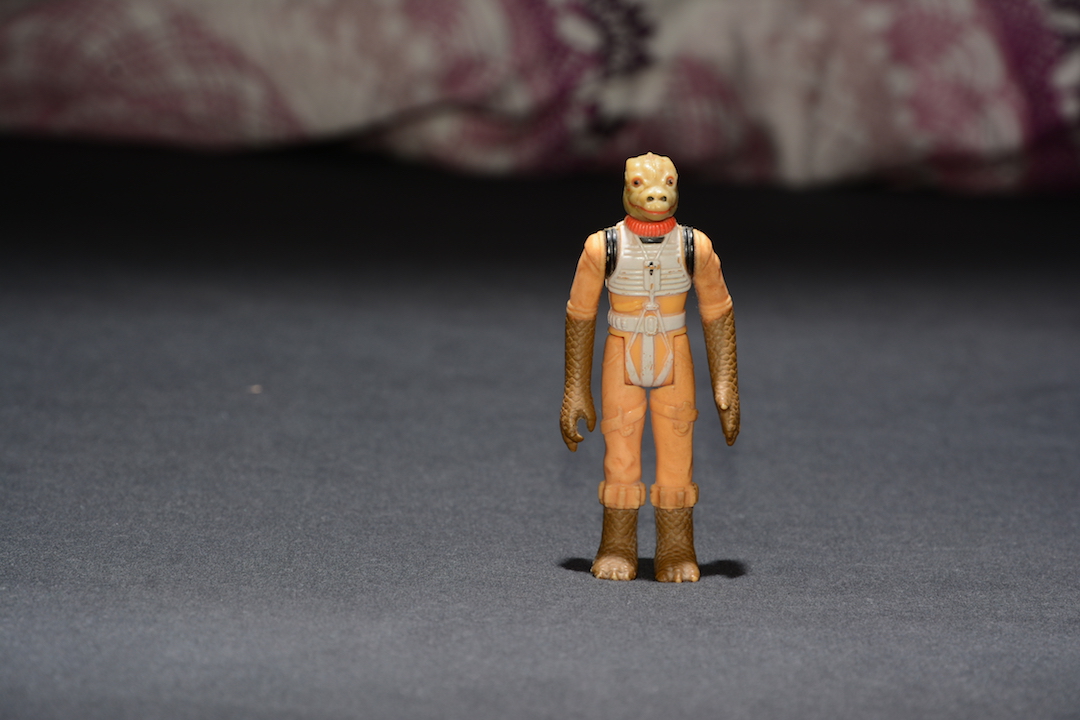
Above and slightly behind:
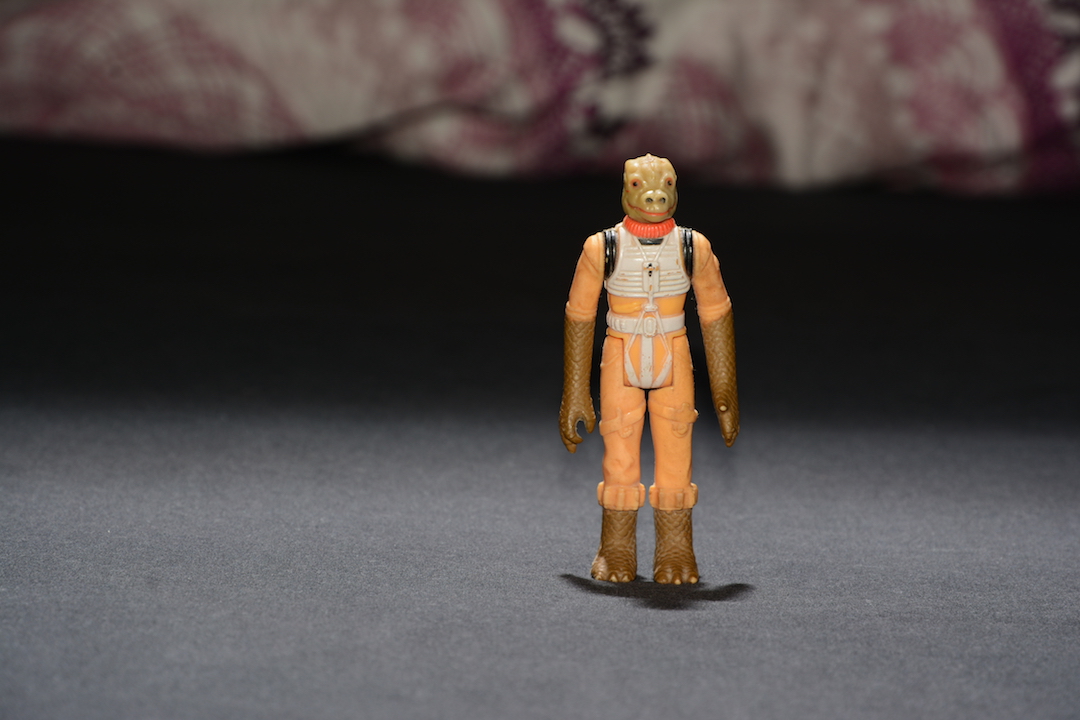
Nice, but nothing to write home about. Now let's try the same thing with the internal flash turned off. (It still puts out some control flashes, so if you're really close the subject will still get some illumination from the internal flash.) Above in front:
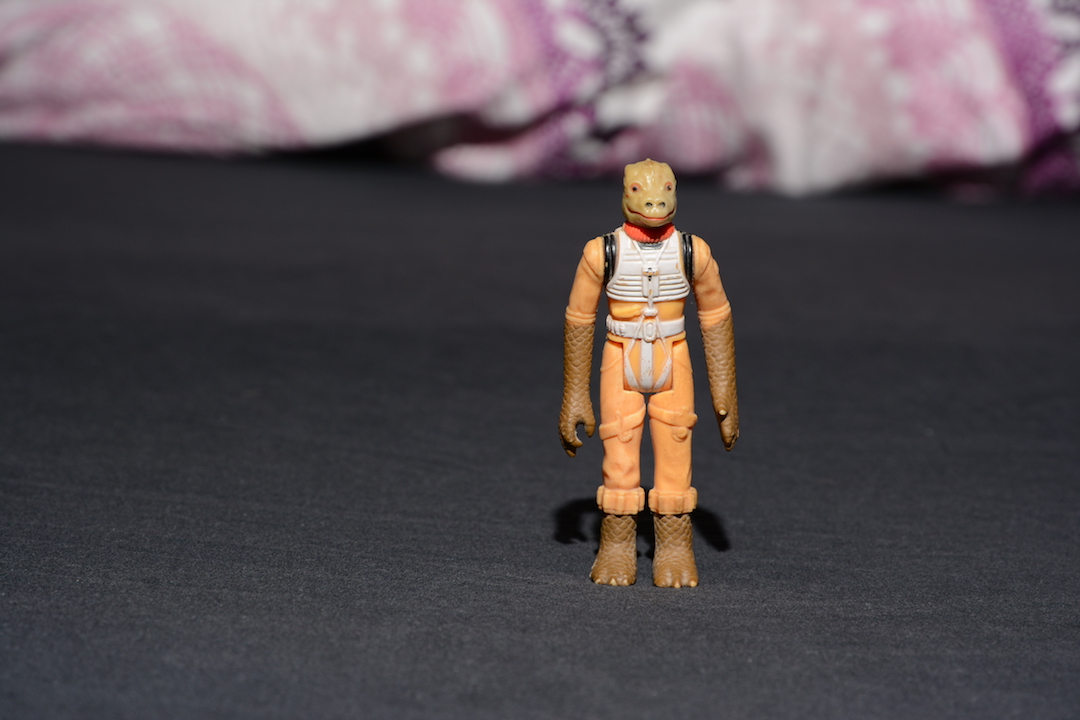
Straight above:
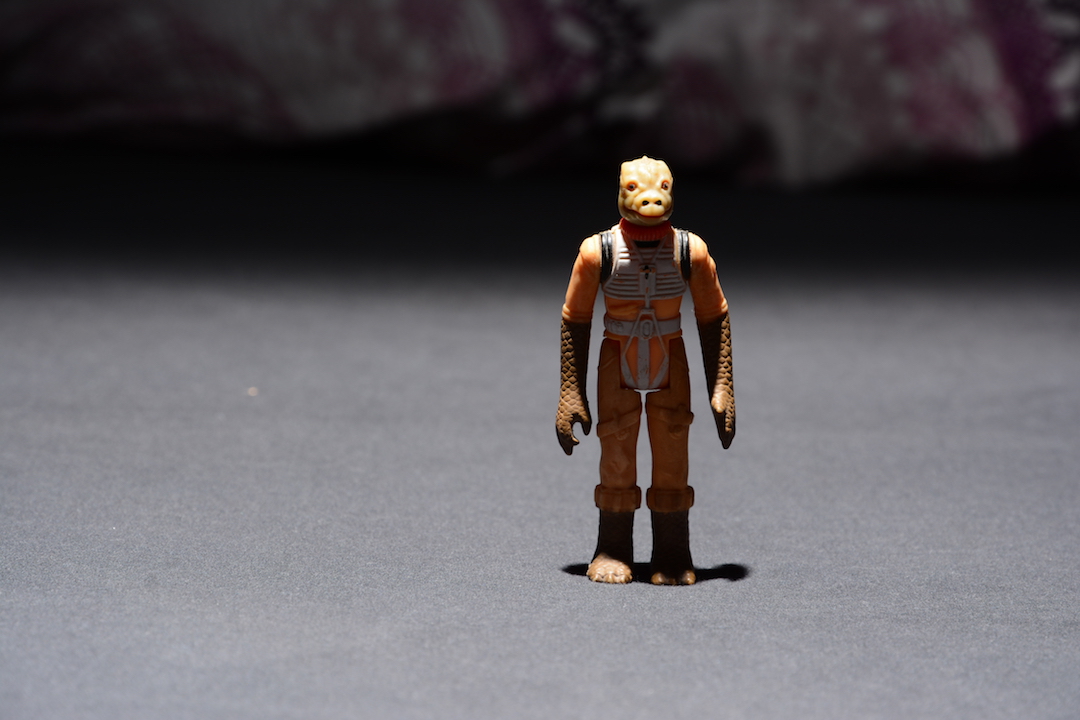
Above and behind:
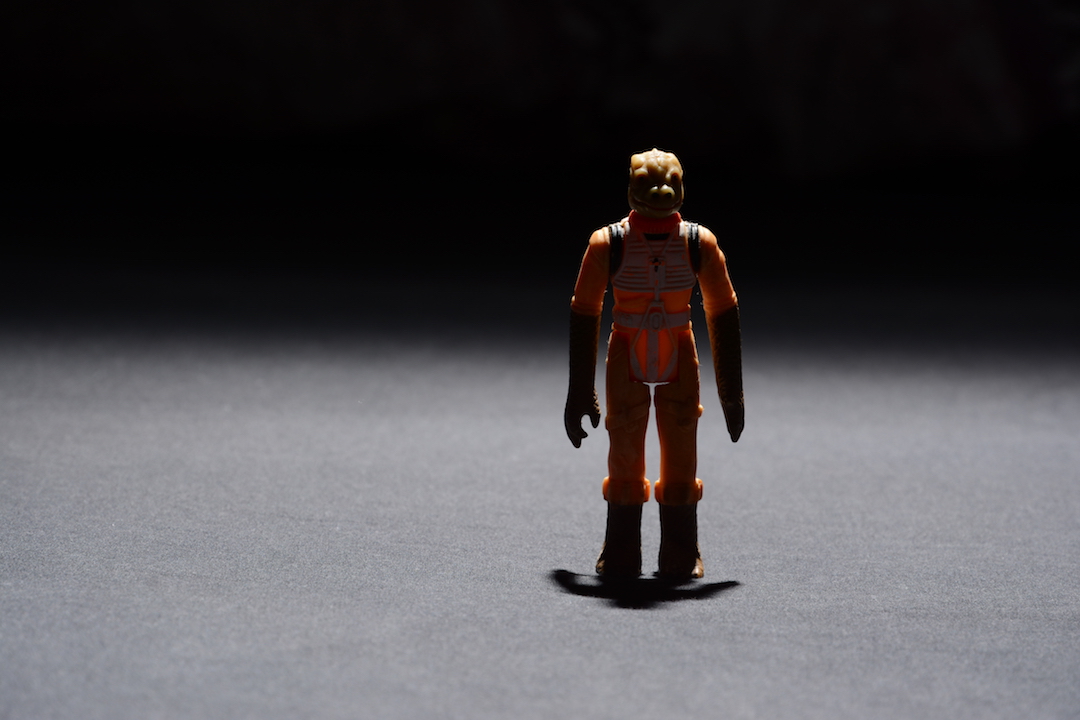
This is extremely cool. And very dramatic. I can't wait to use this technique on some real subjects.
For good measure, again from the front right:
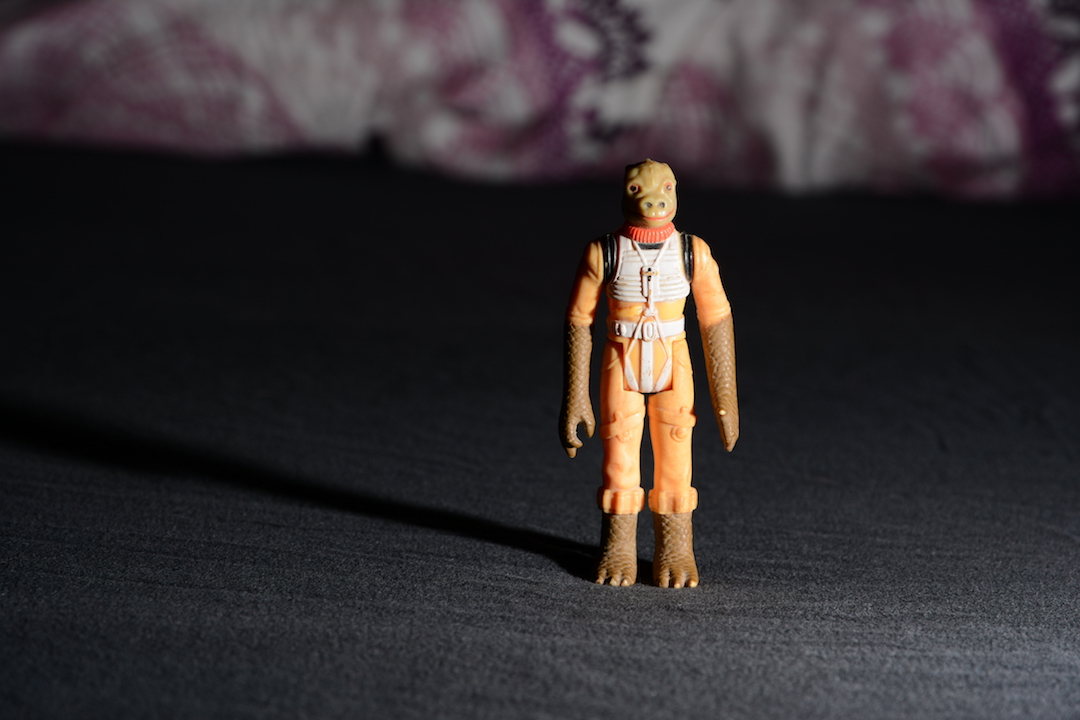
Here the SB-700 is about twice as far from the subject. Note the effect on the background: in the previous photo, the subject was about four times as close to the flash as the background, so the background is very dim. Here it's more like twice as far, so the difference in illumination between foreground and background is much less.
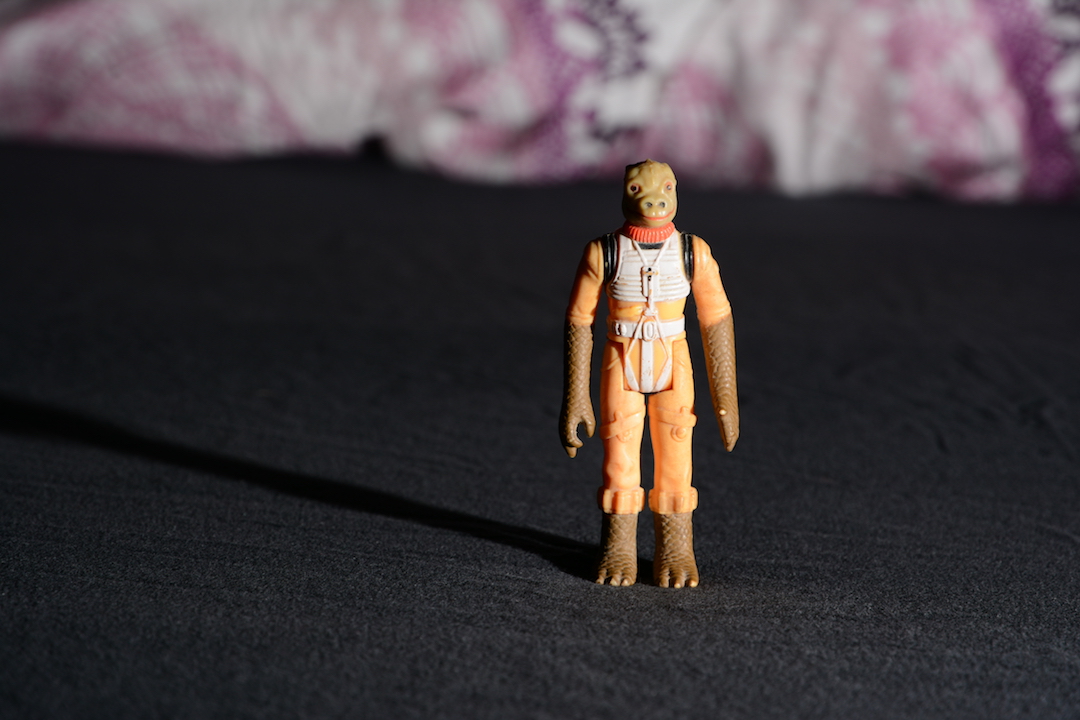
From the front left, very close:
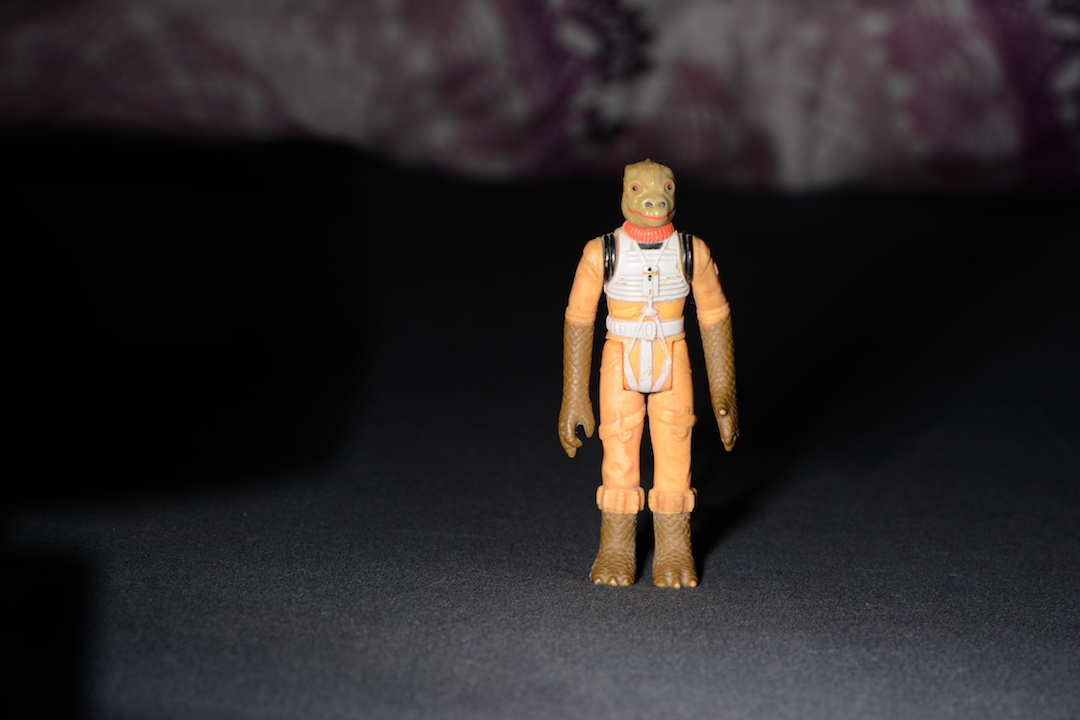
Back right:
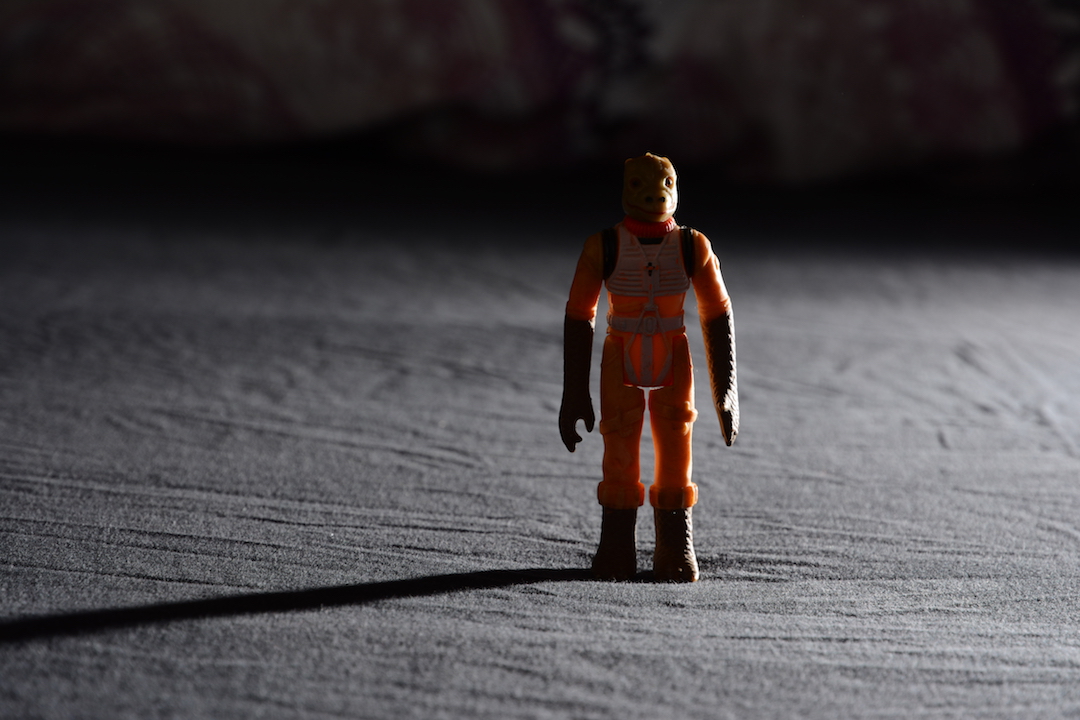
Directly from the right:
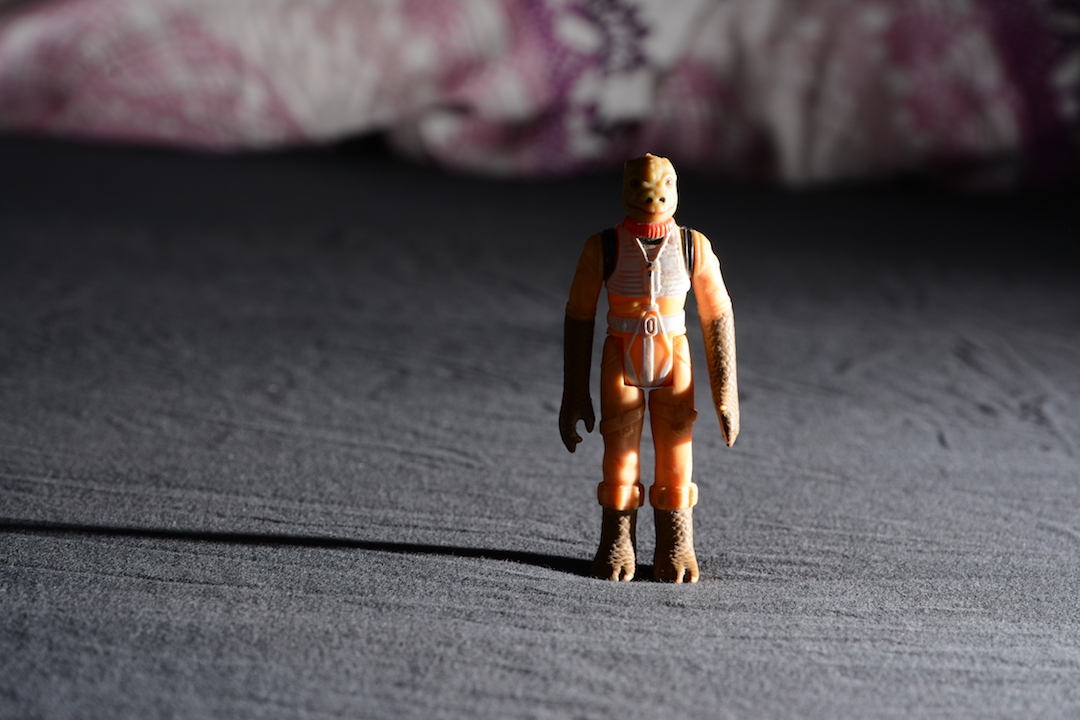
There's a ton of stuff you can do with a remote flash, including putting it somewhere out of the way, pointing to a ceiling or a wall where the bouncing light can illuminate an entire room.
I mentioned at the beginning of this post that the hot shoe has been around for about half a century. Basic flashing will work with any camera that has one of those. Unfortunately, basic flashing is usually not good enough. I'm not sure how things worked back in the bulb days. But with relatively sensitive film (ISO 200 or 400 or so), the exposure leeway you get is so large that you'll usually get a workable shot with a standard flash level. That's how disposable cameras work today.
However, those big electronic flashes put out way too much light at full power at close distances, and "workable" is not really good enough at these price levels. So electronic flashes need to adjust their power to the needs of the shot. You can calculate this yourslef based on the flash' "guide number", which works like this:
distance = GN / aperture
or
aperture = GN / distance
The guide number depends on the ISO setting (it's usually specified for ISO 100 and goes up by a factor 1.4 for every doubling of the ISO value) and meters vs feet. The SB-700 has a GN of 28 meters at ISO 100. So it can reach 10 meters at f/2.8 or 1.75 m at f/16 or some other combination.
In the 1970s, we got computer flashes (also see here) that had a little light sensor and would stop in mid-flash once the scene had received sufficient light. So now you only have to worry about the maximum distance, if you're closer, the flash simply adjusts its output and you get a reasonable exposure.
Of course having a separate little eye that determines the amount of light the flash produces is not nearly as good as evaluating the amount of light that actually comes in through the lens, the same as with normal through-the-lens light metering. So in the 1980s, the camera makers implemented flash TTL metering. Unfortunately, they all did this in different ways, making the flash units from different vendors incompatible. A problem here is that the flash doesn't start flashing until the shutter is open and the light meter can't look through the lens like it normally does. So in the film era, TTL flash was done by metering the amount of light reflected back by the film.
Unfortunately, that trick doesn't work with digital image sensors. So digital cameras do one or more pre-flashes so the light meter can determine the correct exposure. Then the shutter opens and the flash fires for real. So digital flash TTL systems are different from the film ones, even from the same vendor. Just for good measure, Nikon also changed its digital flash TTL system from d-TTL to i-TTL, which is what current digital cameras use.
Unfortunately, the SB-700, like nearly all modern flashes, is incompatible with all previous forms of TTL flash, and it also doesn't have its own built-in light metering eye. It will still do manual flash, though, which any camera can trigger. You get full power, or a fraction as small as 1/128th, which you can set with the control panel on the back of the unit.
I guess manual mode could be useful for some hardcore strobistery, but I don't think I'll be using the SB-700 with any of my old film cameras, as that would almost certainly waste tons of film.
Last but not least, you can set up the SB-700 to just go off in sync with another flash unit. Do this by setting it to remote mode, enabling SU-4 rather than the normal "advanced" wireless mode and setting the mode selector to manual. In this mode, I was able to take this photo with my Canon Powershot camera:
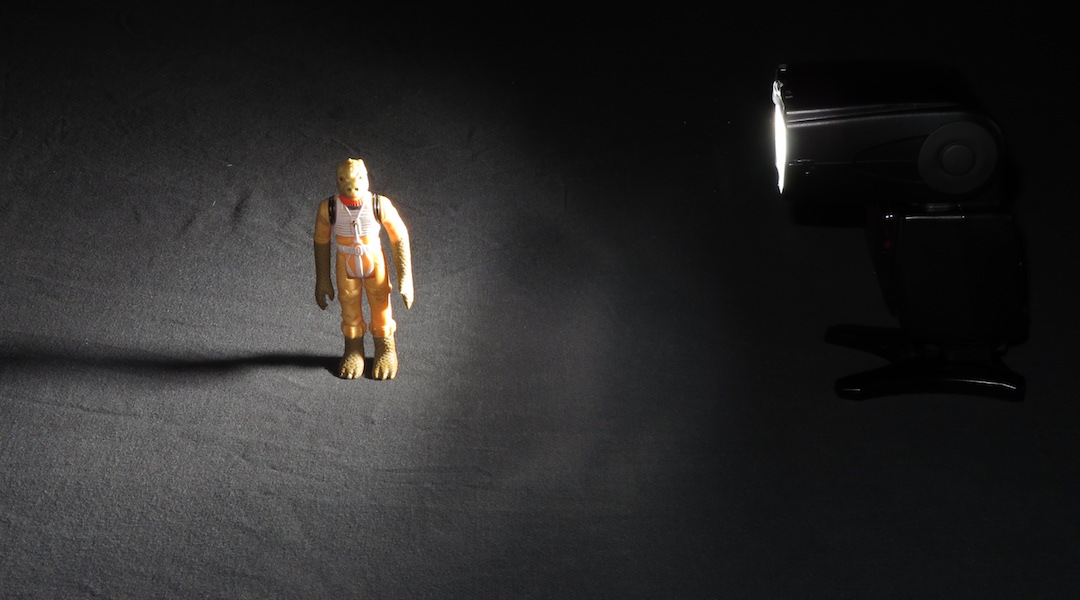
(However, I did have to set it to manual mode to avoid preflashes that would trigger the SB-700 rather than the main flash.)
The SB-700 has a bunch more features, including the ability to automatically adjust the width of the flash beam to the focal length of your lens. It also comes with orange and green filters to match incandescent and fluorescent light, so if you use fill in flash the colors look the way they should. When you attach these filters, that is even communicated back to the camera so it can change its white balance. Not sure of that worked properly, though. My experience is that it's best to set white balance to incandescent manually, because the auto white balance doesn't completely compensate.
Further reading: